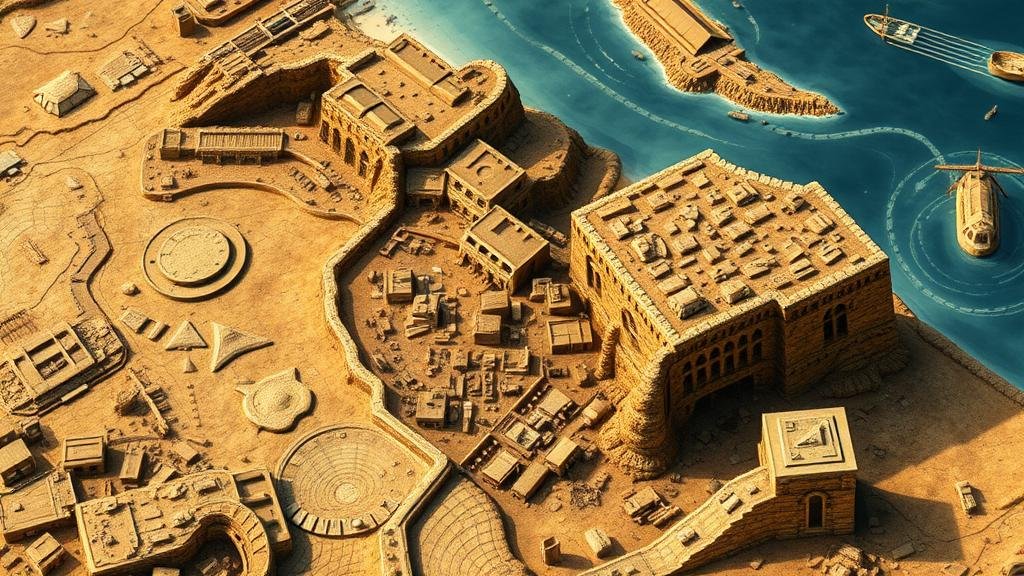Training AI Models to Detect Relationships Between Early Settler Maps and Relics
Training AI Models to Detect Relationships Between Early Settler Maps and Relics
The intersection of artificial intelligence (AI) and historical research is rapidly emerging as a vital field in understanding human interactions with their environments. This article explores the methodologies and implications of training AI models to detect relationships between early settler maps and archaeological relics. By employing machine learning techniques, researchers can gain insights into settlement patterns, land use, and cultural exchanges of early settlers. This study focuses on regions in North America, particularly the 17th and 18th centuries, when European colonization transformed indigenous landscapes.
Historical Context
Early settler maps, particularly those created during the colonial period, are crucial not only for navigation but also for understanding the socio-cultural dynamics of the time. These maps often depict land allotments, trails, and the names of indigenous peoples and settlements, serving as primary sources for historians. For example, the 1671 map by cartographer John Speed, The Theatre of the Empire of Great Britaine, provided extensive geographical information, revealing the relationships between settlers and existing communities.
In contrast, relics–such as pottery, tools, and structural remnants–offer tangible evidence of daily life, trade, and cultural practices. By examining these artifacts, archaeologists can reconstruct aspects of early settler life that may not be explicitly noted in historical texts. Combining data from maps and relics presents a unique opportunity to validate and enrich our understanding of these historical contexts.
AI Techniques for Relationship Detection
Data Collection and Preprocessing
The initial step in training AI models involves gathering and digitizing historical artifacts and map data. High-resolution scans of early maps must be processed to identify relevant features such as land use, boundaries, and geographic landmarks. Simultaneously, archaeological databases containing descriptions and photographs of relics can be compiled. This multifaceted dataset allows for nuanced analysis.
Machine Learning Algorithms
Several machine learning algorithms may be employed to analyze the dataset effectively:
- Convolutional Neural Networks (CNNs): Used for image recognition tasks, CNNs can identify features on maps and in photographs of relics.
- Natural Language Processing (NLP): NLP techniques can extract information from historical texts related to maps and relics, improving contextual understanding.
- Random Forest Classifiers: These can be used to categorize various types of relics based on their features and correlate them with map data.
Applications and Case Studies
Real-world applications of AI in this field can significantly enhance archaeological research. One pertinent case study is the ongoing examination of early settler maps from Virginia, coupled with findings from historical excavations. By applying CNNs to analyze the maps and identify specific structures–such as homes or trade routes–researchers discovered correlations between mapped locations and sites of artifact recovery, emphasizing trade routes importance in settler interactions with indigenous populations.
Challenges and Ethical Considerations
While the use of AI presents immense potential, several challenges must be addressed. One significant issue pertains to data quality and completeness; many historical maps are fragmented, and records of relics may be inconsistent. Plus, there is an ethical responsibility when interpreting data that pertains to indigenous cultures, ensuring their histories and perspectives are respected and accurately represented.
Conclusion and Future Directions
The fusion of AI and historical cartography offers promising avenues for elucidating the relationships between early settler maps and relics. As machine learning technologies evolve, so too will the methodologies for extracting meaningful insights from complex historical data. Future research could pioneer more sophisticated algorithms to improve accuracy and enhance interdisciplinary collaboration among historians, archaeologists, and computer scientists.
In summary, leveraging AI in historical research not only enriches our understanding of past societies but also ensures that the narratives of early settlers and indigenous peoples continue to be explored and honored through modern technological advancements.


